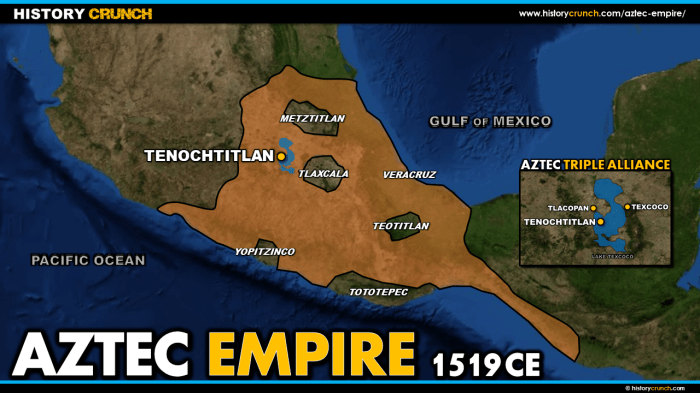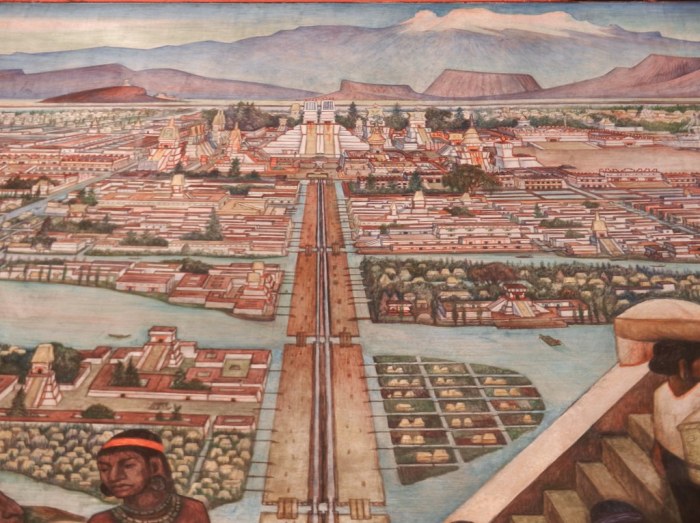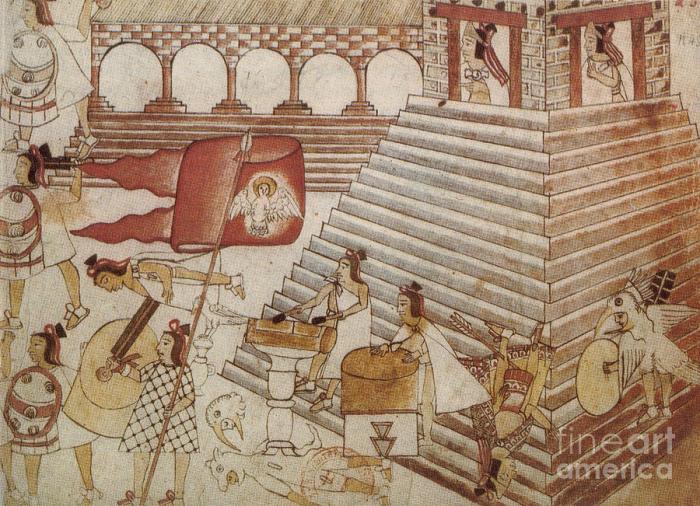Colonisation the great city of tenochtitlan – Colonization of the Great City of Tenochtitlan: A Historical Overview delves into the rise and fall of one of the most impressive urban centers of the pre-Columbian Americas. This article explores the factors that contributed to Tenochtitlan’s prominence, its sophisticated urban planning and infrastructure, and the profound impact of Spanish colonization.
Tenochtitlan, the capital of the Aztec Empire, was a marvel of urban planning and engineering. Its advanced infrastructure, including canals, causeways, and architectural wonders, supported a thriving population and facilitated extensive trade.
Historical Context
Tenochtitlan, the capital city of the Aztec Empire, was founded in 1325 on an island in the middle of Lake Texcoco. It quickly rose to become one of the largest and most powerful cities in the pre-Columbian Americas.
The city’s strategic location on the lake provided it with access to both fresh water and a rich supply of fish. The Aztecs also developed a sophisticated system of canals and causeways that connected Tenochtitlan to the mainland, allowing for easy transportation of goods and people.
Factors Contributing to Tenochtitlan’s Rise, Colonisation the great city of tenochtitlan
- Strategic location on an island in the middle of Lake Texcoco
- Access to fresh water and a rich supply of fish
- Sophisticated system of canals and causeways
- Fertile agricultural land surrounding the lake
- Strong military and political leadership
Urban Planning and Infrastructure: Colonisation The Great City Of Tenochtitlan

Tenochtitlan was renowned for its advanced urban planning and infrastructure. The city was laid out in a grid pattern, with wide streets and canals running through it. The buildings were made of stone and adobe, and the city had a complex system of aqueducts and reservoirs that provided it with a constant supply of fresh water.
Canals, Causeways, and Architectural Marvels
- Canals for transportation and trade
- Causeways connecting the city to the mainland
- Pyramids and temples, including the Great Pyramid of Tenochtitlan
- Palaces and other public buildings
- Floating gardens called chinampas
Social and Cultural Aspects

Tenochtitlan was a vibrant and cosmopolitan city. It was home to a diverse population of Aztecs, as well as people from other parts of Mesoamerica. The city was a center of religious and cultural activity, and it was home to many temples, schools, and markets.
Religious Ceremonies, Festivals, and Daily Routines
- Religious ceremonies honoring Aztec gods
- Festivals celebrating important events in the Aztec calendar
- Daily routines of the Aztec people, including work, education, and leisure activities
- Social hierarchy and class structure
Economic Activities
Tenochtitlan was a major trading hub. It was home to a vast market system, where goods from all over Mesoamerica were bought and sold. The city was also a center of production, and it was home to many skilled artisans who produced a variety of goods, including pottery, textiles, and jewelry.
Trading Hub and Market System
- Exchange of goods from all over Mesoamerica
- Central market in the heart of the city
- Specialized markets for different types of goods
- Use of currency, including cocoa beans and gold dust
Impact of Spanish Colonization
The arrival of the Spanish in the early 16th century had a devastating impact on Tenochtitlan. The Spanish conquistadors, led by Hernán Cortés, besieged the city in 1521 and eventually conquered it. The city was looted and burned, and the Aztec Empire was destroyed.
Events Leading to the Fall of Tenochtitlan
- Arrival of Hernán Cortés and the Spanish conquistadors
- Siege of Tenochtitlan
- Destruction of the city
- Death of Aztec emperor Cuauhtémoc
Archaeological Significance

The ruins of Tenochtitlan are a UNESCO World Heritage Site. Archaeological excavations have revealed much about the city’s history and culture. The ruins include the Great Pyramid of Tenochtitlan, the Templo Mayor, and the remains of the city’s canals and causeways.
Preservation and Study of the City’s Ruins
- Importance of preserving the archaeological site
- Ongoing excavations and research
- Insights into Aztec history and culture
- Protection and conservation efforts
Key Questions Answered
What was the significance of Tenochtitlan?
Tenochtitlan was the capital of the Aztec Empire and one of the largest and most advanced cities in the pre-Columbian Americas.
What factors contributed to Tenochtitlan’s rise as a powerful urban center?
Tenochtitlan’s strategic location on an island in Lake Texcoco, its advanced urban planning and infrastructure, and its role as a major trading hub all contributed to its rise as a powerful urban center.
What was the impact of Spanish colonization on Tenochtitlan?
Spanish colonization led to the fall of the Aztec Empire and the destruction of much of Tenochtitlan’s infrastructure. The city was rebuilt by the Spanish as Mexico City, which became the capital of New Spain.